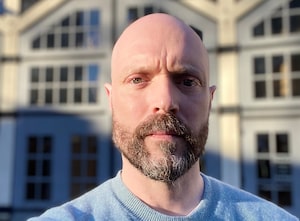A Tesla vehicle charging at a Tesla supercharging station in Kettleman City, Calif., on Jan. 25.MIKE BLAKE/Reuters
In May, Ford Motor Co. was the first major automaker to announce that its EVs would soon be able to use Tesla Inc.’s Supercharger network.
In less than six months, 20 more brands have joined Ford. The latest is Lucid, which announced the move in early November.
Companies are charging ahead with Tesla’s fast chargers because they’re more reliable and easier to use than most other fast charging networks, said Daniel Breton, chief executive officer of Electric Mobility Canada, a Montreal-based national non-profit that promotes EV ownership.
After two EV road trips, I would want my next one to be in a Tesla
“They’re seeing that the consumer experience is so much better than most other networks,” he said. “[Ford CEO] Jim Farley went on a vacation with his kids in a Ford F-150 Lightning and said he saw that the only chargers that always worked were Tesla’s Superchargers. That, to me, says everything.”
Public fast chargers can charge an EV to 80 per cent in about 20 to 45 minutes, depending on the car and the speed of the charger.
Tesla launched its proprietary Supercharger network of EV fast chargers in 2012. They only worked with Teslas and use a different plug than other chargers. A year ago, Tesla announced it would start allowing other carmakers to use its proprietary charging standard, which it calls the North American charging standard (NACS).
So far, Acura, BMW, Fisker, Ford, General Motors, Genesis, Honda, Hyundai, Infiniti, Jaguar, Kia, Lexus, Lucid, Mercedes-Benz, Mini, Nissan, Polestar, Rolls-Royce, Subaru, Toyota and Volvo have all said they will be switching to Tesla’s charging standard on new EVs by 2025 (Acura and Honda say it could be 2026).
Many have said they’ll also be offering an adapter next year so existing EVs with CCS plugs can use Superchargers with NACS plugs (2025 for BMW, Mini, Rolls-Royce, Acura, Honda, Genesis, Hyundai, Kia and Lucid).
So far, the holdouts are Stellantis (which includes Chrysler, Dodge, Fiat, Jeep and Ram) and Volkswagen Group (which includes Audi, Bentley, Porsche and Volkswagen). Both companies have said they’re evaluating the option.
In a J.D. Power study of public chargers earlier this year, Tesla’s network came first for reliability.
According to the study, 21.6 per cent of EV drivers who went to non-Tesla public charging stations couldn’t charge their vehicles – compared to 3.9 per cent who had problems at Tesla Superchargers.
“When it comes to reliability, no other provider is even close to Tesla,” the report said.
Unlike most other networks, which require an app, an RFID card, a credit card or a bank card to start charging, Tesla’s chargers are plug-and-pay – you plug in and that’s it. They automatically start charging and, when finished, charge the cost to your Tesla account.
Automakers didn’t mention plug-and-pay capability in their announcements about the switch.
Several of the companies who immediately responded to our questions, including Ford, Mercedes-Benz, Toyota and Volvo, said charging at Superchargers will be activated and paid for through their apps.
When asked if that might change, most said they had nothing to announce now.
But Breton suspects those EVs will eventually be able to plug-and-pay at Superchargers as part of a larger move toward the technology.
“This year, seven car manufacturers [General Motors, BMW, Honda, Hyundai, Kia, Mercedes Benz and Stellantis] said they’d be building 30,000 chargers together and they said they would be plug-and-pay,” Breton said.
Tesla didn’t respond to repeated requests for comment.
The company has also been adding built-in CCS adapters to some of its Superchargers to allow other EV brands to charge. So far in Canada, there are just two Supercharger stations with the adapters (which Tesla calls the Magic Dock) – in North Bay and Deep River, Ont.
As of August, of the more than 4,500 fast charging ports in Canada, more than 1,900 were Tesla Superchargers, according to data from National Resources Canada.
Even though these agreements with Tesla will mean more drivers will be competing for the Superchargers, Breton doesn’t think it will mean longer wait times. He expects most other charging networks to start using Tesla’s NACS plug, so Tesla drivers can more easily use them too. Right now, they have to use an adapter.
“So in places where there’s no Supercharger, [Tesla drivers] will be able to plug their car in at ChargePoint or Flo,” he said.
Also, if Tesla drivers have put their destination into the car’s GPS, it will send them to a Supercharger that likely won’t be busy, Breton said.
“Even if other cars aren’t actually there yet, the network knows that their navigation systems are sending them there,” Breton said. “So it sends you to a different Supercharger.”
John Dixon, a Burlington, Ont. Tesla owner and president of the Tesla Owner’s Club of Ontario says there hasn’t be much discussion about the agreements. “We have a Facebook group [with 3,900 followers] and this has not been a topic I’ve seen any concern about.”
Dixon expects Tesla to open more stations and add more chargers to existing stations to keep up with demand – especially along the busy corridor between Toronto and Montreal.
“They’re opening them fast and furious and they’re getting bigger and bigger,” he said. “There’s one opening in Mississauga with 32 chargers.”
Dixon said he rarely uses Superchargers – he charges at home or when he gets to the cottage – but he thinks Tesla opening it’s network is good for EVs in general.
“Tesla’s network is the most reliable – often when you go to other networks half the stalls are down or [your car] can’t communicate with the charger,” he said. “It’s good news for EVs.”
 Jason Tchir
Jason Tchir